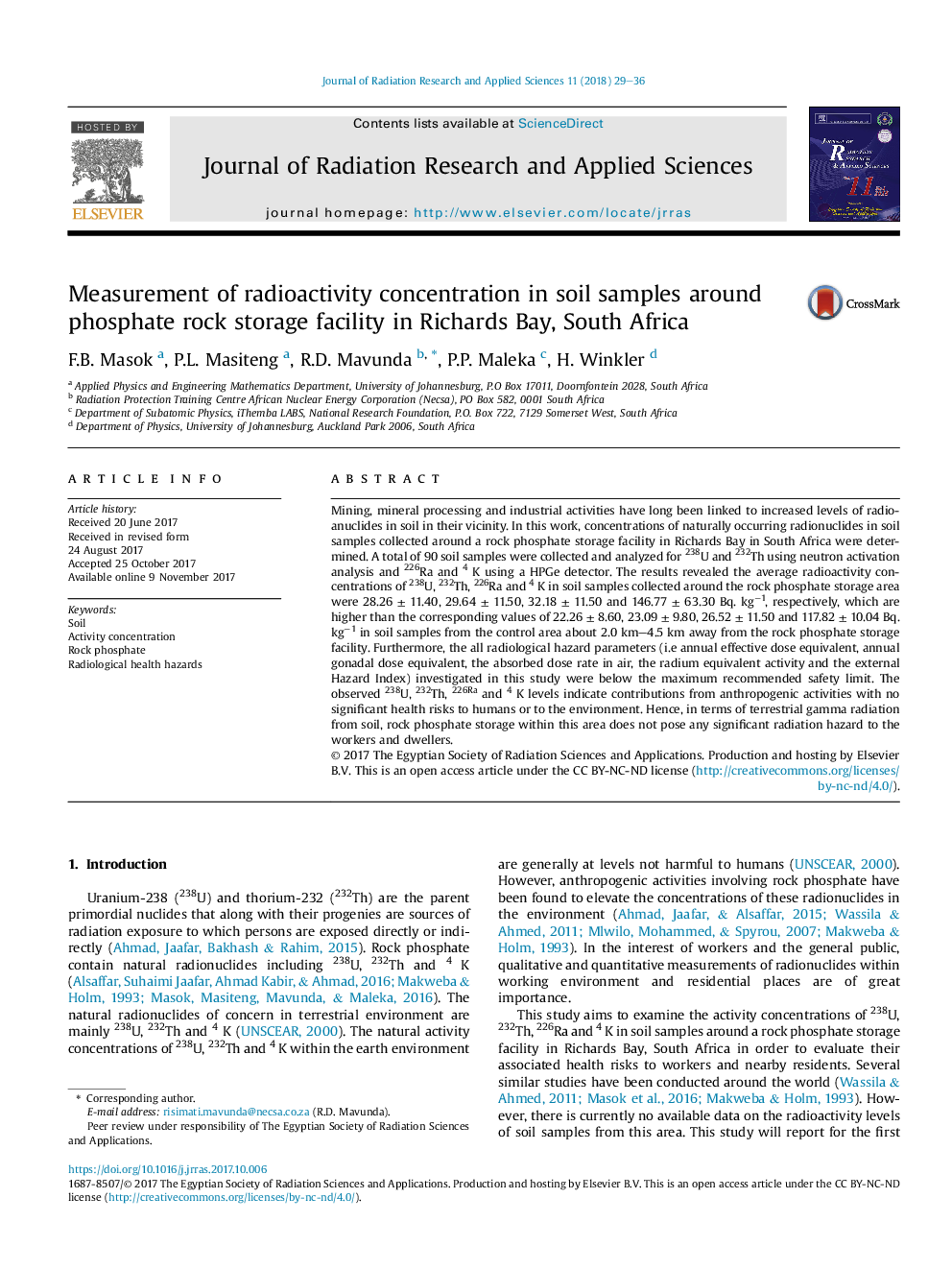| Article ID | Journal | Published Year | Pages | File Type |
|---|---|---|---|---|
| 7968873 | Journal of Radiation Research and Applied Sciences | 2018 | 8 Pages |
Abstract
Mining, mineral processing and industrial activities have long been linked to increased levels of radioanuclides in soil in their vicinity. In this work, concentrations of naturally occurring radionuclides in soil samples collected around a rock phosphate storage facility in Richards Bay in South Africa were determined. A total of 90 soil samples were collected and analyzed for 238U and 232Th using neutron activation analysis and 226Ra and 4 K using a HPGe detector. The results revealed the average radioactivity concentrations of 238U, 232Th, 226Ra and 4 K in soil samples collected around the rock phosphate storage area were 28.26 ± 11.40, 29.64 ± 11.50, 32.18 ± 11.50 and 146.77 ± 63.30 Bq. kgâ1, respectively, which are higher than the corresponding values of 22.26 ± 8.60, 23.09 ± 9.80, 26.52 ± 11.50 and 117.82 ± 10.04 Bq. kgâ1 in soil samples from the control area about 2.0 km-4.5 km away from the rock phosphate storage facility. Furthermore, the all radiological hazard parameters (i.e annual effective dose equivalent, annual gonadal dose equivalent, the absorbed dose rate in air, the radium equivalent activity and the external Hazard Index) investigated in this study were below the maximum recommended safety limit. The observed 238U, 232Th, 226Ra and 4 K levels indicate contributions from anthropogenic activities with no significant health risks to humans or to the environment. Hence, in terms of terrestrial gamma radiation from soil, rock phosphate storage within this area does not pose any significant radiation hazard to the workers and dwellers.
Related Topics
Physical Sciences and Engineering
Materials Science
Materials Science (General)
Authors
F.B. Masok, P.L. Masiteng, R.D. Mavunda, P.P. Maleka, H. Winkler,
